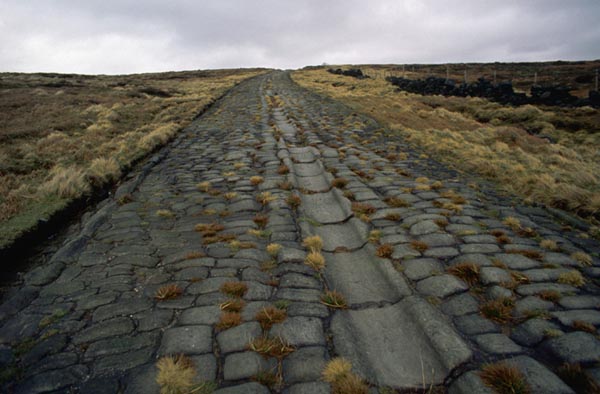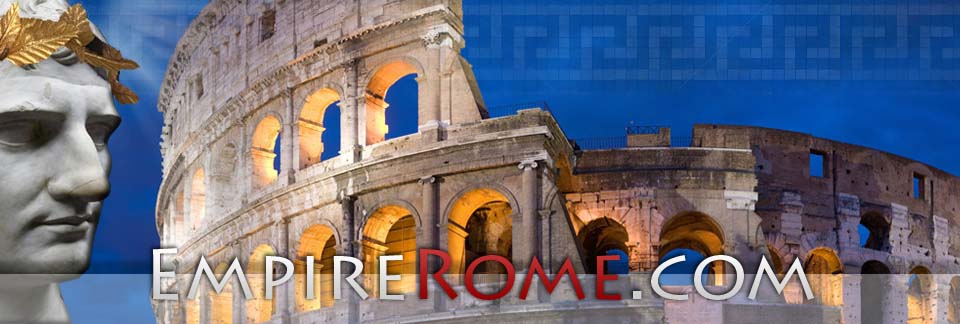 Roads are one of Ancient Rome’s greatest accomplishments. These Ancient Roman roads allowed the Ancient Romans to move resources and military legions more easily, unlike other civilizations of that time era. Ancient Rome built over 50,000 miles of paved roads that were accessible to merchants and citizens. Roads in Ancient Rome were used to connect the unknown world with the known empire. It is important to remember that at the time, the concept of paved roads was unheard of. Most roads were paths or dirt roads that caused problems for travelers, military, and merchants. During Ancient Roman times roads were unpaved or were simple common paths. The problem with these rudimentary roads is that when bad weather came the roads would get destroyed and the paths washed away. The roads also led to other problems along the way for travelers because of the uneven unforgiving roads which took more energy for both people and animals to travel on.
Roads are one of Ancient Rome’s greatest accomplishments. These Ancient Roman roads allowed the Ancient Romans to move resources and military legions more easily, unlike other civilizations of that time era. Ancient Rome built over 50,000 miles of paved roads that were accessible to merchants and citizens. Roads in Ancient Rome were used to connect the unknown world with the known empire. It is important to remember that at the time, the concept of paved roads was unheard of. Most roads were paths or dirt roads that caused problems for travelers, military, and merchants. During Ancient Roman times roads were unpaved or were simple common paths. The problem with these rudimentary roads is that when bad weather came the roads would get destroyed and the paths washed away. The roads also led to other problems along the way for travelers because of the uneven unforgiving roads which took more energy for both people and animals to travel on.
Ancient Roman merchants benefited from Roman roads because most people during that time used caravans or water transport to obtain goods from other places. It was much easier to travel on a clear defined paved road then to go through unmarked damaged pathways that were not always safe or stable. In addition, other hurdles like broken wheels and injured animals due to weathered and trampled pathways were obstacles in getting goods sold. The Ancient Roman roads helped to solve many of these problems. A great advantage of the Ancient Roman roads was that bad weather did not stop the empire from moving goods; it may have slowed it down, but it did not stop goods from coming and going. Ancient Rome had perfected the road so well that they built gutters alongside the roads to help keep excess water and other debris off them. The roads were built high in the middle and low on the sides to ensure water and other debris would slide down into the gutters and not create hold ups or road blocks. The design of these Roman roads helped citizens and merchants keep their usual business efficient and consistent. The Ancient Romans were known to want exotic merchandise and did almost anything to obtain these commodities. These roads enabled the Ancient Romans to move goods freely throughout the empire with much speed and ease.
 The problem with roads was that even though it made traveling much easier, it was in no means as efficient as today’s travelers. Romans had to be careful of criminals and other problems that are associated with traveling. It was theoretically possible to travel from one end of the empire to the other; however, nautical travel was still more attractive for longer distances. The roads also allowed the Ancient Romans the advantage of having a mailing system. This mailing systems allowed mail to be sent from one place to another very quickly. Not only did the roads bring efficiencies, it allowed Ancient Rome to become the central hub for trade, culture, and military.
The problem with roads was that even though it made traveling much easier, it was in no means as efficient as today’s travelers. Romans had to be careful of criminals and other problems that are associated with traveling. It was theoretically possible to travel from one end of the empire to the other; however, nautical travel was still more attractive for longer distances. The roads also allowed the Ancient Romans the advantage of having a mailing system. This mailing systems allowed mail to be sent from one place to another very quickly. Not only did the roads bring efficiencies, it allowed Ancient Rome to become the central hub for trade, culture, and military.
“All roads lead to Rome.” Is a famous but true saying. In the ancient world, Rome was the heart of the powerful empire that would change the west forever. Every time a new territory or city was conquered, roads were built back to Rome to ensure military and Roman influences would make its way back to Rome. Also, if the Romans needed to get to any of these places quickly, these ancient roads provided a way. This in turn helped keep citizens in order, since they knew the military was only a short trip away. Alongside the roads were signs called milestones. Unlike today’s signs, the milestones did not provide much information. The only information provided by these milestones was how far they were from Ancient Rome or what the next major city was. Additionally, some milestones had the information of people who paid for them. Milestones were about 6 feet tall so they could be easily read by caravans and marching armies.
Like most Ancient Roman construction, roads were built by legions and roman armies. The Ancient Roman Army was known to build such structures as bridges, roads, and buildings because of the advantage they offered to the empire. Much of the road repair was not commissioned by the Ancient Roman government and was likely repaired by local engineers and towns who used these roads most frequently. It was expected that as the army marched, they were expected to repair and build roads from their own resources. Even though it was believed that the army did most of the repairs, it was locals who provided money and materials to assist in the repair and building process. As the west fell in 426 AD, road building and repair declined throughout the medieval ages.
To read more on Ancient Roman roads, please click the following links below.

